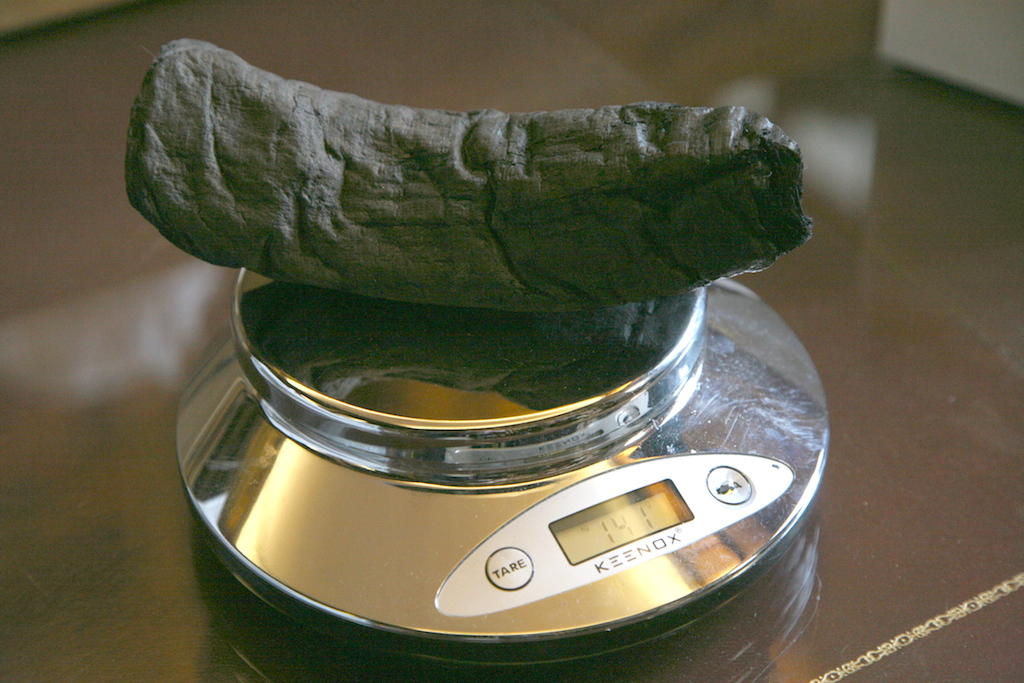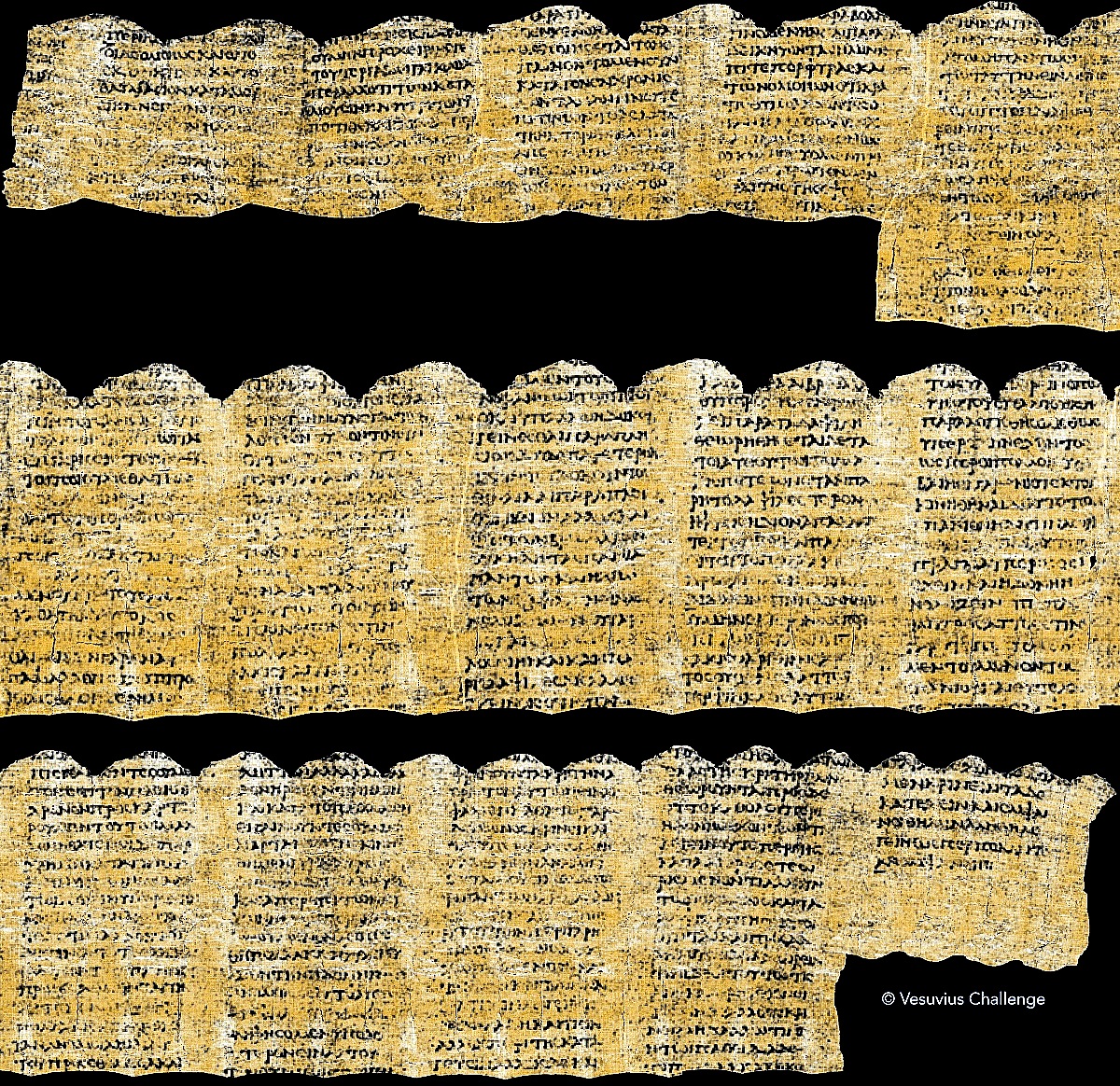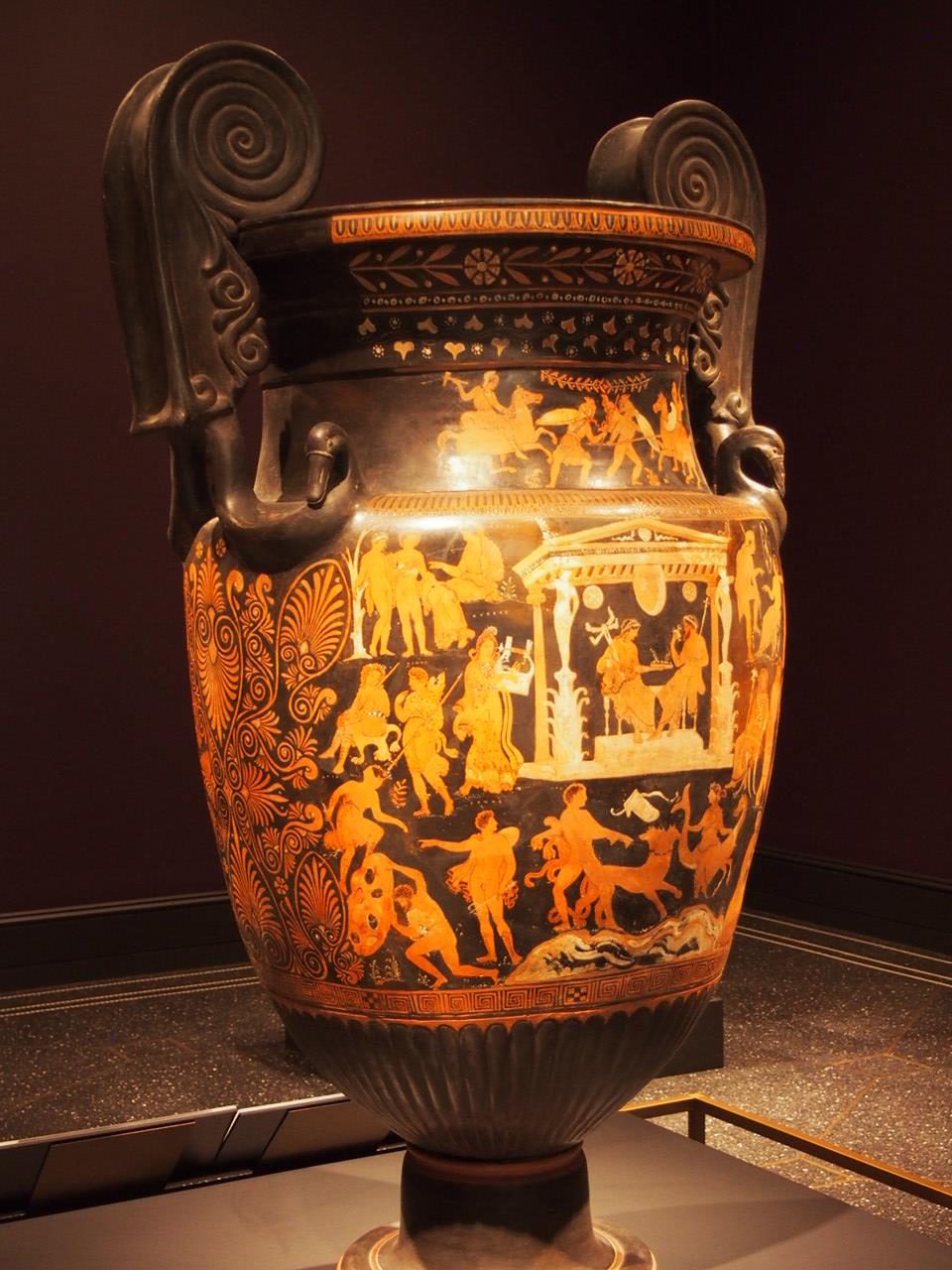The Victorious Challenge
Carbonized papyrus scroll (Digital Restoration Project, U-KY)
In 79 AD, Italy's Mount Vesuvius erupted and buried two Roman towns, Pompeii and Herculaneum, on the Bay of Naples nearby. Pompeii was a commercial trading hub and was burned from searing ash that enveloped the town. Herculaneum was a wealthy community, not unlike Beverly Hills or Malibu today, that became encased in flowing, hot mud that killed all its residents.
A stunning villa sat overlooking the bay which was owned by the Roman consul Lucius Calpurnius, father-in-law of Julius Caesar. It was lost that morning. When excavators re-discovered the luxurious home in the mid-18th Century, a library of nearly 1000 papyrus scrolls was found in one room near what had been the kitchen. With no oxygen to produce flames, the papryi had become carbonized instead of burning, not like charcoal briquettes, when the mud covered the villa. The black lumps became known as the Herculaneum papyri and gave the house its name, the Villa dei Papyri. Attempts to un-wrap and read the scrolls proved fruitless as they simply disintegrated. The carbonized relics were placed in boxes to be stored in Italian, French, and British libraries where they remained into the present day.
In 2023, the Vesuvius Challenge was launched by a group of private investors, reserachers, and others to answer a basic question: How could the scrolls be read if they remained rolled up? Awards were offered to successful investigators who could develop methods that might decipher the Greek letters and words written within the carbonized papyri. Previous efforts at reading an ancient document in Israel and the 3D scanning capabilities of the Digital Restoration Project, at the University of Kentucky, offered clues.
When the challenge was announced, the goal was to decipher 4 passages of at least 140 characters from one scroll. The sponsors of the Challenge expected less than a 30% probability of success with their strict deciphering criteria. One submission became the clear winner. Besides meeting the challenge, their visualized text included 11 additional columns adding more than 2000 characters recovered from the papyri.
Now, 275 years after their discovery in the buried villa, a scroll from antiquity has been read for the first time in 2000 years. The treatise ponders the philosophical question about the value of good food, music, and a life worth living. According to the Vesuvius Challenge, their team of papyrologists has created a preliminary transcription of all the columns, 5% of the carbonized book, that have so far been revealed. They determined the Herculaneum scroll is not a duplicate of any known existing work and that, it contains a never-before-seen text from antiquity.


Carbonized Herculaneum scroll (credit: Vesuvius Challenge) Herculaneum scroll deciphered
The Challenge winners included Youssef Nader, an Egyptian PhD candidate in Berlin; 21 year old Luke Farritor, a college student and SpaceX intern from Nebraska; and Julian Schilliger, a Swiss robotics engineer in Zurich. Their awards will be presented during a special event to be held at the Getty Villa in Los Angeles. That building overlooking the Pacific Ocean is an exact replica of the home in Herculaneum that was constructed by J. Paul Getty to house his personal collection of Greco/Roman antiquities.


Re-built Villa dei Papyri garden, Getty Villa Museum California (credit: SWP Media) Greco-Roman vase, Getty Villa
After 2000 years, deciphering an ancient text about enjoying good music, food, and a living worth living may offer us some new ideas to consider after the remaining 95% of the scroll is fully revealed. Nearly 1000 more carbonized scrolls remain to be read and it is anyone's guess what ancient stories they may tell. WHB